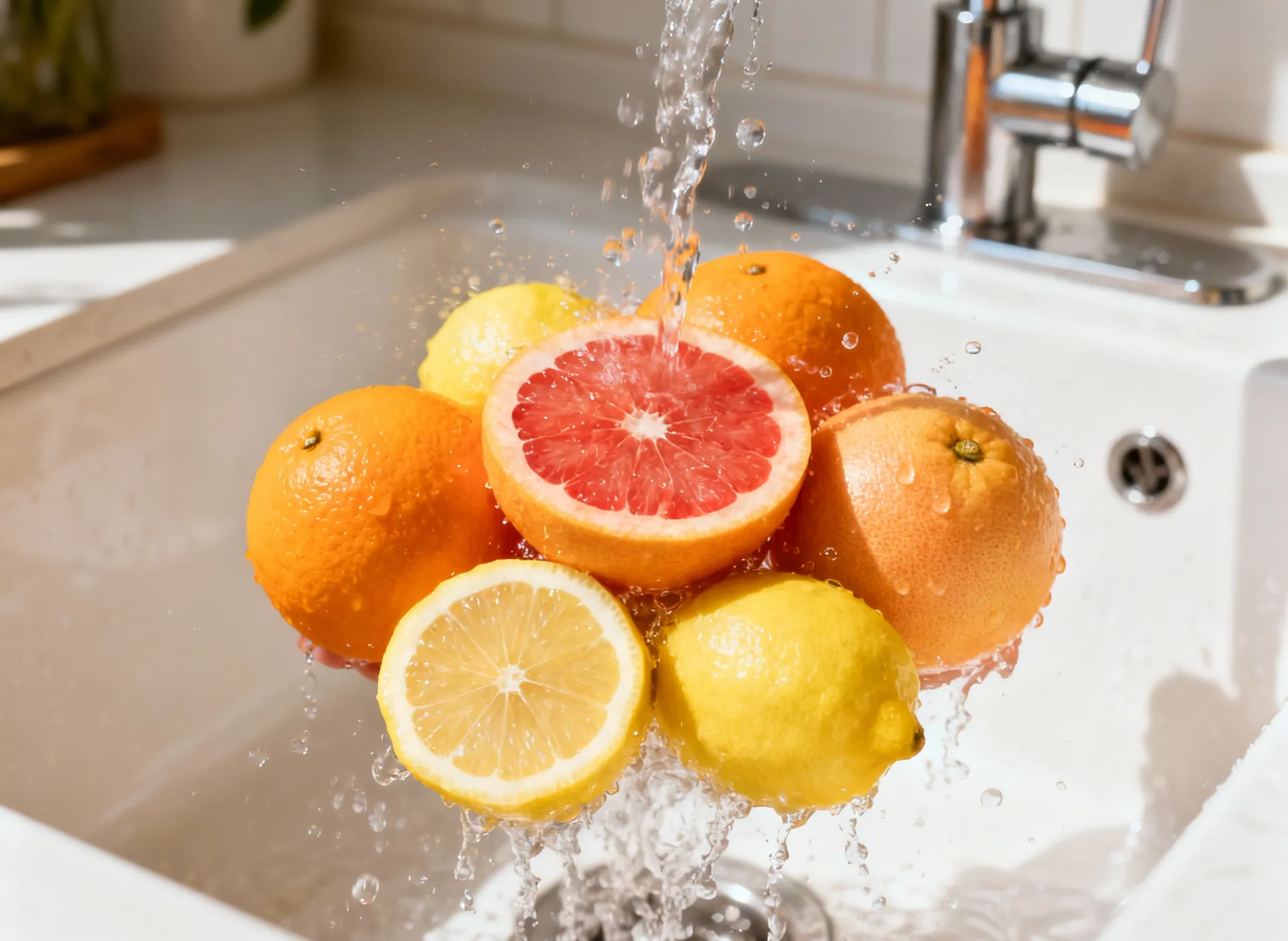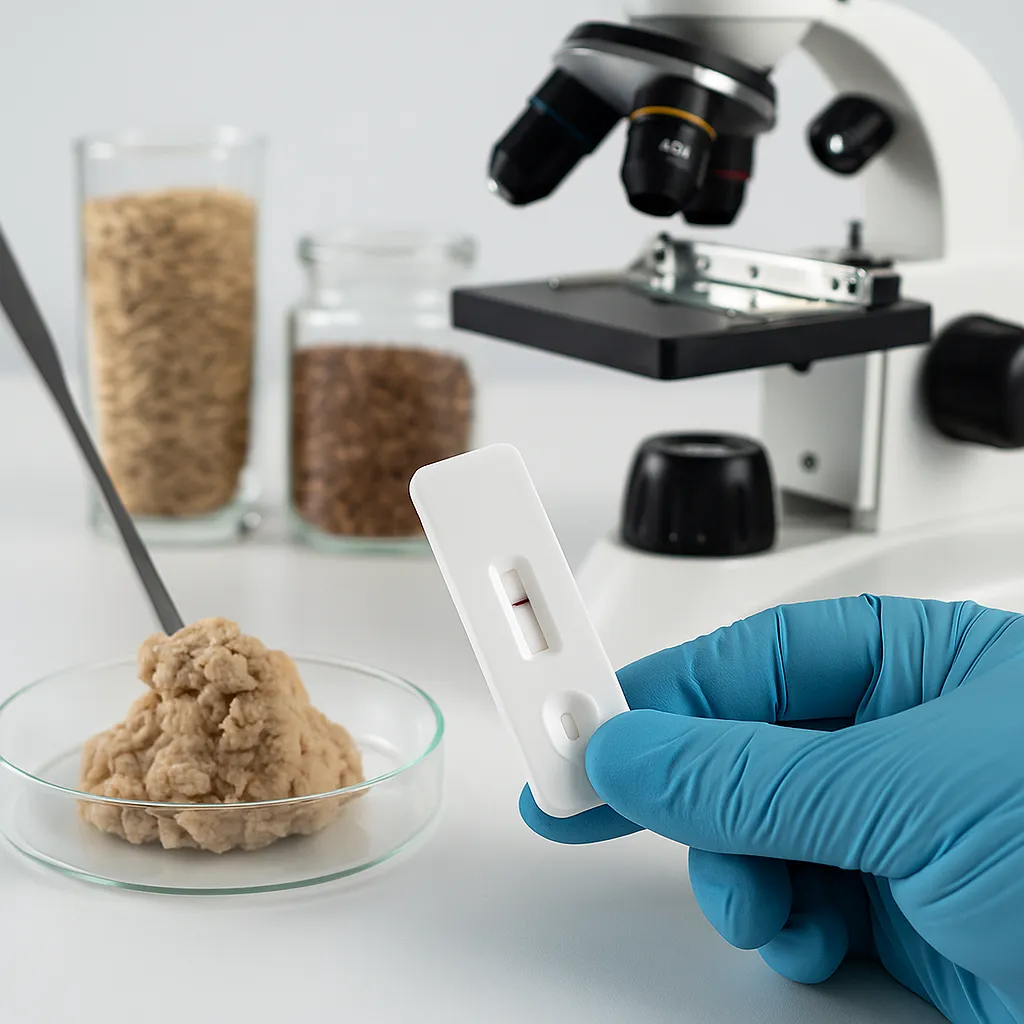How to Remove Residue from Citrus Fruits: A Complete Guide for Cleaner Produce
Discover safe and effective methods to remove wax, pesticides, and dirt from citrus fruits. Learn how to clean oranges, lemons, and limes naturally at home.

Citrus fruits like oranges, lemons, limes, and grapefruits are staples in many kitchens for their vibrant flavor and nutritional benefits. Yet few people realize that these fruits often come coated with a thin layer of wax or chemical residue. This coating helps preserve freshness and enhance appearance but may trap pesticides or contaminants on the surface. Thankfully, removing residue from citrus fruits is simple and can be done using natural ingredients found in most homes.
Why Cleaning Citrus Fruit Matters
Most citrus fruits go through packing processes that include washing, waxing, and sometimes pesticide applications to extend shelf life. While peeling does remove much of the exposure risk, residue can still linger on hands, cutting boards, and knives, potentially transferring to the fruit’s flesh.
Cleaning citrus fruit before use helps to:
- Remove wax and chemical coatings applied during packaging.
- Reduce pesticide and dirt residue from cultivation and handling.
- Improve the flavor and texture of zest when using the peel in recipes.
- Promote a cleaner, healthier eating experience overall.
Understanding the Types of Residue
Before diving into cleaning solutions, it helps to know what types of residue often appear on citrus fruits:
- Natural Waxes: Many fruits produce a natural wax to retain moisture, though commercial waxing adds a glossy layer for marketing appeal.
- Pesticide Residue: Conventional citrus crops may receive multiple treatments to deter pests, leaving trace chemicals on the peel.
- Dirt and Handling Contaminants: From picking to transport, fruits come in contact with many surfaces.
Best Methods to Remove Residue from Citrus Fruits
Here are proven, natural methods to eliminate residue and refresh your citrus fruits safely and effectively.
1. Warm Water and Baking Soda Soak
This simple combination breaks down wax and neutralizes chemical residues.
- Fill a large bowl with warm (not hot) water.
- Add 1–2 tablespoons of baking soda and stir to dissolve.
- Place your citrus fruits in the solution for 10–15 minutes.
- Gently rub each fruit with your hands or a soft produce brush to lift residue.
- Rinse thoroughly under cool running water and dry with a clean towel.
Bonus tip: This method works equally well for apples, pears, and cucumbers.
2. Vinegar and Water Wash
White vinegar naturally breaks down wax and helps remove bacteria and chemicals.
- Mix equal parts white vinegar and water in a bowl or spray bottle.
- Apply the solution over the fruit and let it sit for about 5 minutes.
- Rub gently, rinse well with cool water, then dry with a cloth.
Safety note: Vinegar may slightly affect the shine but not the taste, making it an excellent choice before juicing or zesting.
3. Lemon Juice and Salt Scrub
This method is ideal for thick-skinned fruits like oranges and grapefruits.
- Cut a lemon in half and dip it into coarse salt.
- Use the salt-covered lemon to scrub the citrus peel in circular motions.
- Leave it on for 2–3 minutes, then rinse thoroughly.
- Dry completely before storage or peeling.
The natural acidity of lemon juice dissolves coating layers while salt acts as a gentle abrasive.
4. Use a Vegetable Brush
For heavily waxed fruits, physical scrubbing can be very effective.
- Choose a firm yet gentle vegetable brush with clean bristles.
- Brush the surface under running water to dislodge wax and dirt.
- Pair this technique with a mild baking soda solution for deeper cleaning.
Always dedicate one brush solely for fruit and vegetable cleaning to avoid cross-contamination.
Additional Tips for Cleaner Citrus Fruits
- Use filtered or cooled boiled water to avoid adding impurities back during rinsing.
- Clean citrus before cutting to prevent coating transfer from peel to flesh.
- Store cleaned fruits properly—once washed and dried, keep them in a breathable container in the refrigerator.
- Buy organic when possible to minimize synthetic coatings and pesticides from the start.
Natural DIY Citrus Cleaner Recipe
If you use citrus often, keep a homemade cleaning solution on hand.
Ingredients:
- 1 cup filtered water
- 1 cup white vinegar
- 1 tablespoon baking soda
- Juice of one lemon
Instructions:
- Combine ingredients in a large spray bottle. (Add baking soda last to reduce fizzing.)
- Shake gently before each use.
- Spray over fruits, let sit 5 minutes, scrub gently, rinse, and dry.
This all-purpose cleaner can also be used for other produce, making kitchen cleaning more sustainable and eco-friendly.
Commercial Fruit Washes: Are They Worth It?
Several commercial fruit and vegetable washes claim to remove more residue than water alone. Studies show that while some may perform slightly better, most natural solutions like baking soda or vinegar achieve comparable results at a fraction of the cost.
Choose commercial products with simple, food-safe ingredients and avoid those with artificial fragrances or dyes. Ultimately, consistency in washing matters more than the specific product used.
When Not to Wash Citrus Fruits Immediately
If storing citrus for long periods, avoid washing before refrigeration. Moisture can promote mold growth and shorten shelf life. Instead, wash only before cutting or consuming.
To extend freshness:
- Keep unwashed fruits in a cool, dry area with good ventilation.
- For refrigerated storage, use mesh or paper bags rather than airtight plastic.
Eco-Friendly Considerations
Reducing chemical use goes hand in hand with environmental responsibility. Using natural cleaning solutions not only minimizes residue on fruit but also avoids introducing harsh chemicals into wastewater systems. Recycling citrus peels after cleaning—for compost, natural fragrance, or homemade cleaners—adds another sustainable touch to daily routines.
Common Mistakes to Avoid
- Using boiling water, which can damage the peel and affect flavor.
- Leaving fruit submerged too long, leading to waterlogging or softened skin.
- Skipping the rinse step after vinegar or baking soda treatment.
- Storing damp fruit, which may invite mold or spoilage.
Final Thoughts
Removing residue from citrus fruits ensures cleaner, healthier produce and enhances the quality of zest and juice used in cooking. Whether through a simple baking soda soak, a vinegar rinse, or a lemon-and-salt scrub, these home methods reduce potential chemical exposure at minimal cost. Developing this quick habit contributes to better food hygiene and a more sustainable kitchen routine.
With just a few everyday ingredients and a bit of care, your citrus fruits can look brighter, taste fresher, and feel safer to enjoy in every dish or drink.


